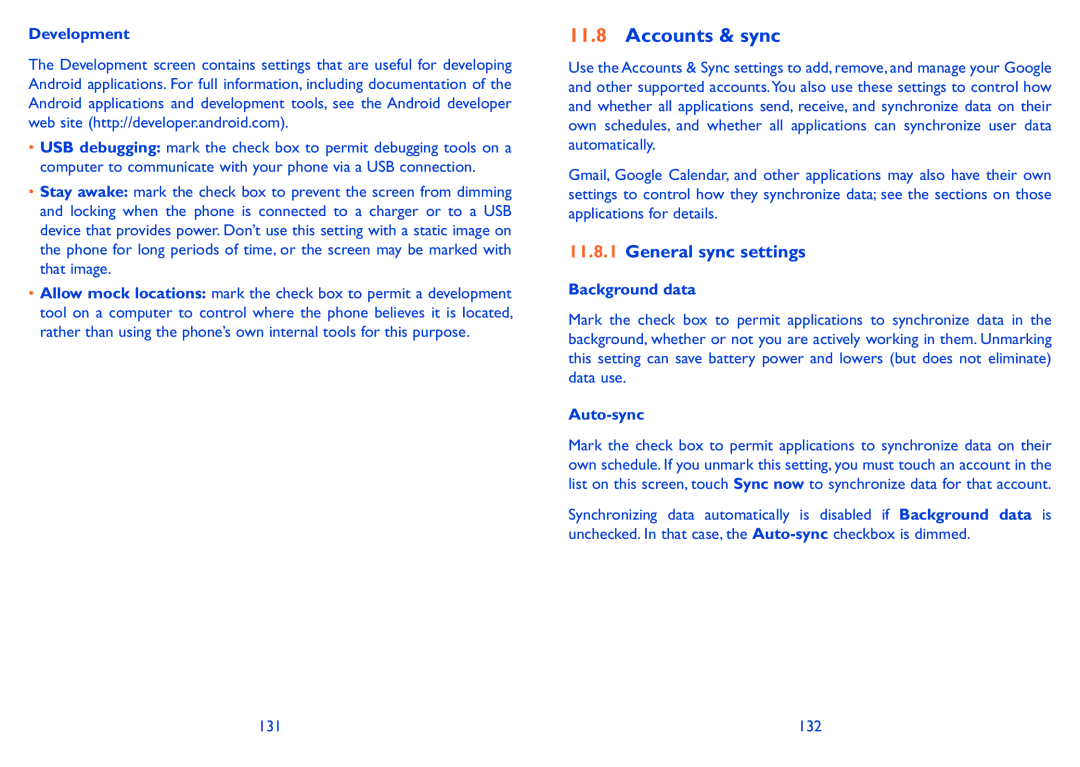Development
The Development screen contains settings that are useful for developing Android applications. For full information, including documentation of the Android applications and development tools, see the Android developer web site (http://developer.android.com).
•USB debugging: mark the check box to permit debugging tools on a computer to communicate with your phone via a USB connection.
•Stay awake: mark the check box to prevent the screen from dimming and locking when the phone is connected to a charger or to a USB device that provides power. Don’t use this setting with a static image on the phone for long periods of time, or the screen may be marked with that image.
•Allow mock locations: mark the check box to permit a development tool on a computer to control where the phone believes it is located, rather than using the phone’s own internal tools for this purpose.
11.8Accounts & sync
Use the Accounts & Sync settings to add, remove, and manage your Google and other supported accounts.You also use these settings to control how and whether all applications send, receive, and synchronize data on their own schedules, and whether all applications can synchronize user data automatically.
Gmail, Google Calendar, and other applications may also have their own settings to control how they synchronize data; see the sections on those applications for details.
11.8.1General sync settings
Background data
Mark the check box to permit applications to synchronize data in the background, whether or not you are actively working in them. Unmarking this setting can save battery power and lowers (but does not eliminate) data use.
Auto-sync
Mark the check box to permit applications to synchronize data on their own schedule. If you unmark this setting, you must touch an account in the list on this screen, touch Sync now to synchronize data for that account.
Synchronizing data automatically is disabled if Background data is unchecked. In that case, the
131 | 132 |
